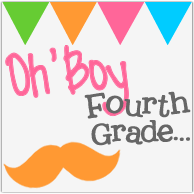
Teaching to Diversity Cover. (Accessed 2014). Uploaded to Amazon; Portage& Main Press.
Available online at: http://www.amazon.ca/Teaching-Diversity-Three-Block-Universal-Learning/dp/1553793536
- Non-aboriginal teachers often feel nervous and unqualified when
it comes to teaching about aboriginal culture
Challenges to Social and Academic Inclusion
- History of Racism
- Once Canada became a country, education was divided into two
categories:
1 ) Status Indians had their education regulated by the federal gov.
2 ) Non-status/Inuit/Metis were under the provincial gov.
- After several years of inadequate programming, with little focus
on academics or cultural integration, the Indian Control for
Indian Education asked for:
1 ) Local community control
2 ) More First Nations teachers
3 ) Creation of relevant curricula & resources for F.N students
4 ) Instruction in F.N languages & culture
- Suicide among F.N use is higher than those of other backgrounds
- Underfunding & Dehumanization
- Funding is regularly lower for F.N communities than others
- Many times issues jump between the federal and provincial
governments and things fall through the cracks
- System Does Not Reflect Aboriginal Experience
- Most on-reserve teachers are not from a First Nations background
- Teachers should make education a priority for themselves and
acknowledge their lack of background
- Lack of Awareness & Misunderstanding
- Students coming from reserve schools often have large gaps due
to lack of educational environments & are placed in exclusive
learning spaces
Opportunities for Social & Academic Inclusion
- Elders recognized that every person could contribute to society in
some way
Connecting Block Three: Systems & Structures
- All provinces & territories have policies in place in regards to
Aboriginal perspective and education
- Teachers have to hold the bar high & challenge students to
meet the high expectations we see them to be capable of
- Some Aboriginal teachers do not have a memory of a compassionate
teacher to model themselves off of
Connecting Block Two: Instructional Practice
- All students need to learn about F.N culture
- Each province/territory has educational resources and supports to
assist in this if you do not know where or how to start
Connecting Block One: Social & Emotional Learning
- Model respect with all students and families
- The Medicine Wheel
- The Seven Teachings
categories:
1 ) Status Indians had their education regulated by the federal gov.
2 ) Non-status/Inuit/Metis were under the provincial gov.
- After several years of inadequate programming, with little focus
on academics or cultural integration, the Indian Control for
Indian Education asked for:
1 ) Local community control
2 ) More First Nations teachers
3 ) Creation of relevant curricula & resources for F.N students
4 ) Instruction in F.N languages & culture
- Suicide among F.N use is higher than those of other backgrounds
- Underfunding & Dehumanization
- Funding is regularly lower for F.N communities than others
- Many times issues jump between the federal and provincial
governments and things fall through the cracks
- System Does Not Reflect Aboriginal Experience
- Most on-reserve teachers are not from a First Nations background
- Teachers should make education a priority for themselves and
acknowledge their lack of background
- Lack of Awareness & Misunderstanding
- Students coming from reserve schools often have large gaps due
to lack of educational environments & are placed in exclusive
learning spaces
Opportunities for Social & Academic Inclusion
- Elders recognized that every person could contribute to society in
some way
Connecting Block Three: Systems & Structures
- All provinces & territories have policies in place in regards to
Aboriginal perspective and education
- Teachers have to hold the bar high & challenge students to
meet the high expectations we see them to be capable of
- Some Aboriginal teachers do not have a memory of a compassionate
teacher to model themselves off of
Connecting Block Two: Instructional Practice
- All students need to learn about F.N culture
- Each province/territory has educational resources and supports to
assist in this if you do not know where or how to start
Connecting Block One: Social & Emotional Learning
- Model respect with all students and families
- The Medicine Wheel
- The Seven Teachings











